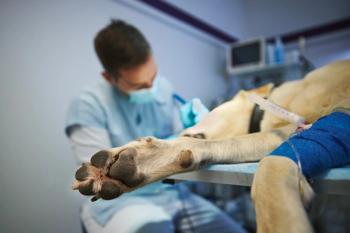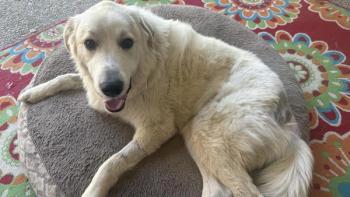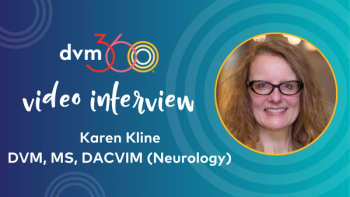
Ruminant neurology (Proceedings)
Neurology in a clinical setting is frustrating for many veterinarians.
Neurology in a clinical setting is frustrating for many veterinarians. Most of this frustration stems from adopting an overly complex diagnostic approach. The traditional approach emphasizes the memorization of anatomical pathways rather than emphasizing clinical signs and disease manifestations. Despite the potential danger involved, physical examination is imperative with neurologic ruminants to avoid empirical treatment. The following is a simple, diagnostic approach to neurologic diseases of cattle with less stress and frustration to the veterinarian. Examination at a distance followed by a cranial nerve examination, postural reactions, spinal reflexes, and palpation can provide the information necessary to determine a gross anatomical diagnosis. Limiting the anatomic sites to 4 major areas allows more latitude in anatomic diagnosis and focuses more on clinical signs and disease manifestations.
For this lecture we will review the process and focus most attention to video for case assessment.
Step 1 – Gross anatomic localization
Many clinical signs of neurologic disease are nonspecific for lesion localization. Avoid getting hung up on signs that don't localize to a single anatomic site. The physical examination should be focused on identifying clinical signs that aid in lesion localization.
Table 1 â Neurologic signs by anatomic location
Step 2 – Determine the broad category of disease etiology
During the course of the diagnostic work-up, it is often useful to determine the etiology of the disease process. This will often aid in narrowing the list of possible differential diagnoses and provide some direction in the ultimate therapeutics of the case. The most useful test for providing this information in neurologic disease is the cerebrospinal fluid analysis.
Table 2 â Anticipated cerebrospinal fluid analysis results by disease status
Step 3 – Define the problem
This step is simply a combination of steps 1 and 2. Problem definition is often skipped, but clear definition of the problem may limit frustration. At this point you have a problem such as bacterial cortical disease or viral brain stem disease.
Step 4 – Build a list of differential diagnoses
At this point a list of differential diagnoses that fit the defined problem should be generated. Nuances in the physical examination and information previously collected from the owner such as signalment, diet, and other historical information should be used to add, subtract and prioritize this list.
Step 5 – Select and perform rule-out and confirmatory tests
This is the time to obtain any additional information necessary to come to a definitive diagnosis. Not all differentials should be entertained with equal vigor. Instead differential diagnoses most likely given the information already on hand should be pursued. Consideration should also be given to the potential for preventative intervention and therapeutic possibilities. Never forget that in some cases a necropsy with appropriate sampling and histopathology may be an appropriate confirmatory test. However, this need not be the fate of all neurologic patients.
Step 6 – Undertake the appropriate therapeutic and preventative measures
Therapy and intervention strategies should be instituted guided by the working diagnosis.
References/suggested reading
1. Constable PD. Clinical examination of the ruminant nervous system. Vet Clin Food Anim 2004; 20:185-214.
2. George LW. Diseases of the nervous system. In: Smith BP (ed.). Large animal internal medicine. 2nd edition. St. Louis, Mosby 1996, Pg. 1001-1175.
3. Welles EG, Tyler JW, Sorjonen DC, Whatley EM. Composition and analysis of cerebrospinal fluid in clinically normal adult cattle. Am J Vet Res 1992; 53:2050-2057
Newsletter
From exam room tips to practice management insights, get trusted veterinary news delivered straight to your inbox—subscribe to dvm360.






